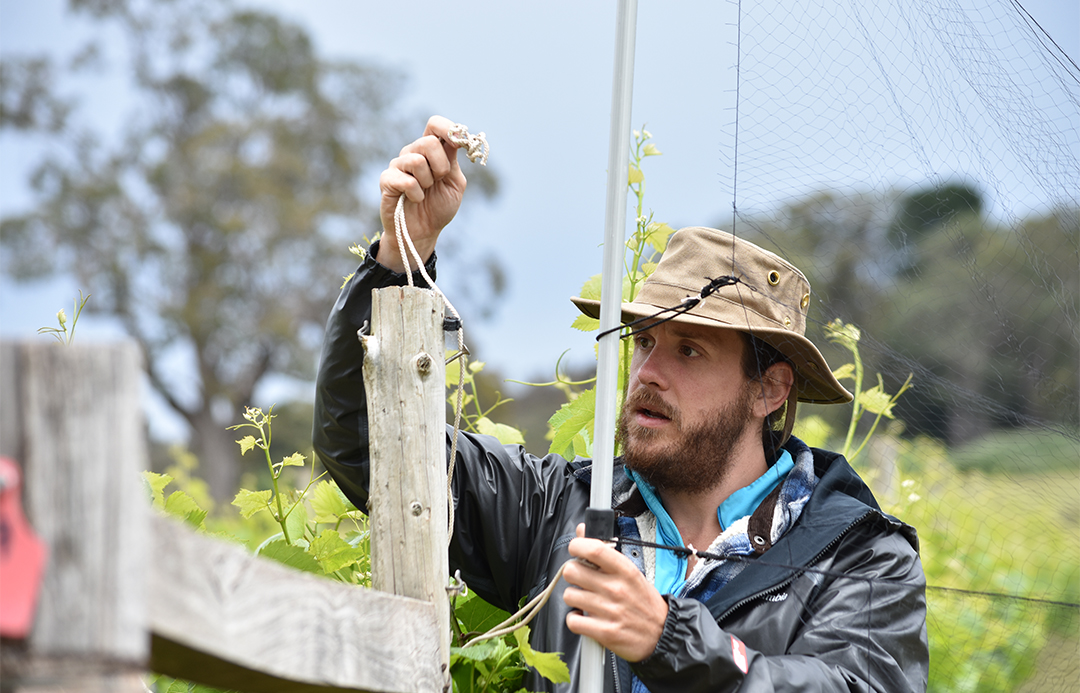Bats and vineyards may seem an unlikely match, but is that really the case? Dr Zenon Czenze and Dr Heidi Kolkert from the University of New England (UNE) are discovering they could in fact be the perfect pairing, due to the ability for some species of bat to protect grapevines from damaging insects.
By replacing artificial pesticides with insect-eating bats, the Australian wine industry could see savings of up to an estimated $50 million. The greatest saving of all, though, would be felt by our native wildlife.
Recently, we caught up with Dr Czenze and Dr Kolkert to find out more about this exciting project, and the potential gains for both growers and the environment. Here's what they had to say:
What makes bats a good form of natural pest control?
"Bats are voracious predators of many insect species and can eat up to three times their body weight in insects each night. Many of the insects, like moths, that some bats prefer to eat are considered pests in vineyards and cause damage to grapevines and reduce yields.
"In North America, a single bat may consume up to 1,000 mosquitoes or other small insects in just one hour! Now, consider that a colony of bats might have hundreds of individuals, and you can see how effective they may be at controlling pest populations."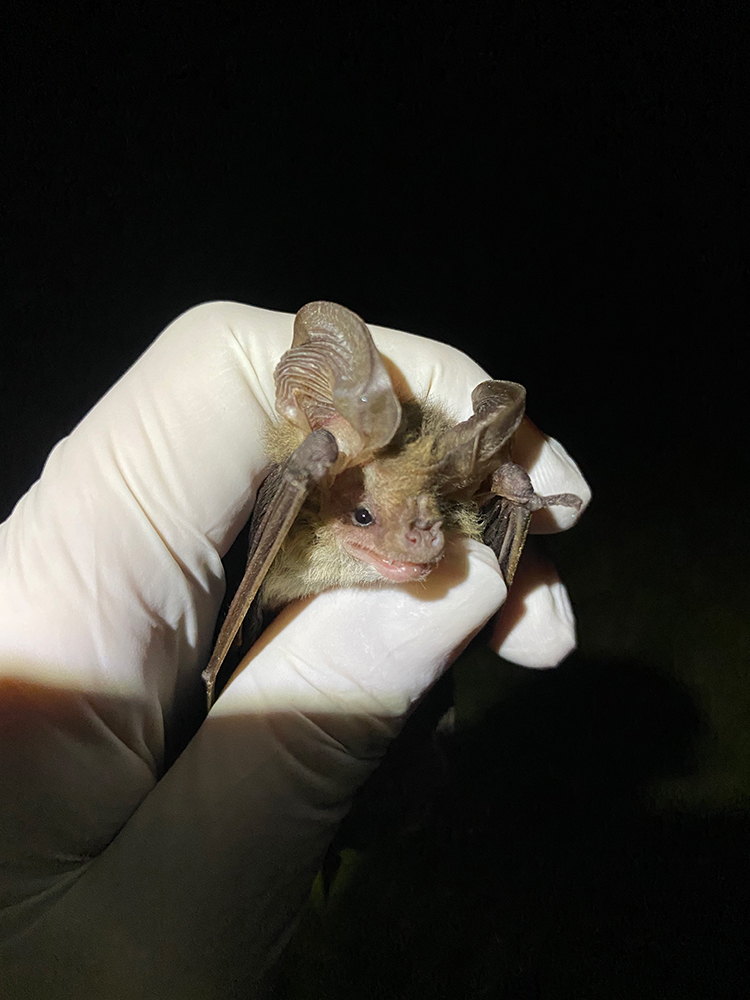
What are some of the pests that are known to impact vineyards?
"There are several types of pests that impact vineyards. One example is Phylloxera, which is a small insect that feeds on the roots of grapevines. Two-spotted mites are also a problem that can cause damage to grapevine leaves, along with Mealybugs that feed on grapevine sap.
"However, some of the worst pests are moths like the Grapevine and Light Brown Apple moth. These moths are a common pest in many vineyards around the world, including in Australia. The caterpillars of these moths feed on grapevine leaves and fruit, leading to reduced yields and lower grape quality and increased susceptibility to disease."
Why are pesticides not the ideal way to tackle this problem?
"Pesticides have significant negative impacts on the environment, leading to contamination of soil, water, and air. This can result in a loss of biodiversity, harm to non-target organisms, and adverse impacts on human health. Agricultural workers, in particular, are at risk of exposure to high levels of pesticides and their associated health risks.
"Furthermore, pests can develop resistance to pesticides over time, necessitating the use of even stronger chemicals. This can lead to a dangerous cycle of pesticide use that has negative impacts on the environment and human health.
"As consumers become more aware of the negative impacts of pesticides, they are increasingly demanding sustainably produced and environmentally-friendly products. By adopting sustainable pest management practices, growers can gain a competitive advantage in the market and attract environmentally conscious consumers.
"Governments worldwide are taking action to regulate the use of pesticides, particularly those linked to negative environmental and health impacts, making it imperative for growers to adopt sustainable pest management practices."
What ecological benefits will come from using bats as pest control?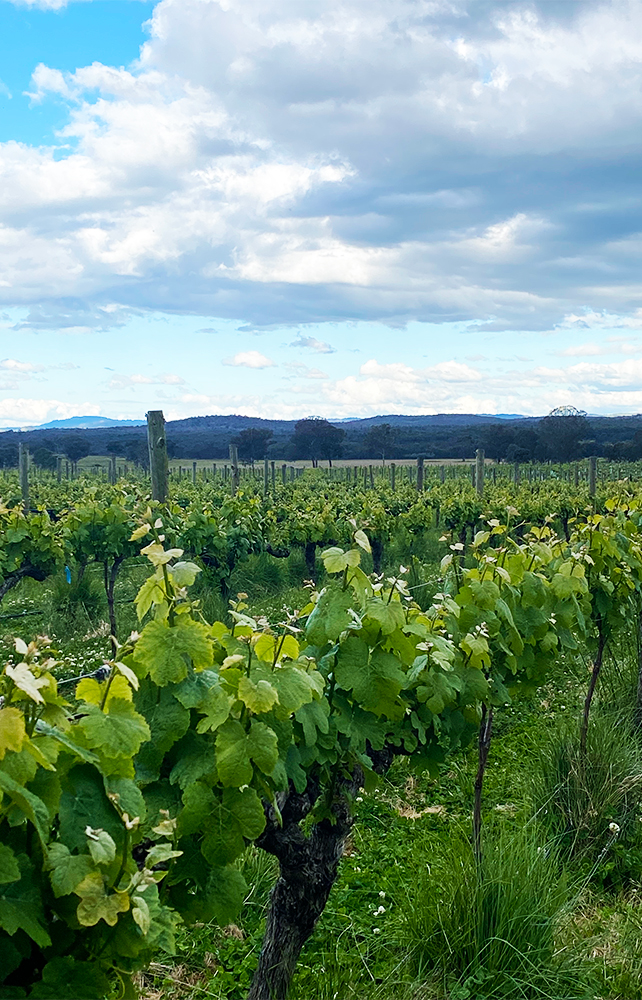
"Bats are a critical piece to many ecosystems and play an important role in maintaining biodiversity. By promoting bat populations in and around vineyards, growers can help to support local biodiversity and maintain a healthy ecosystem.
"We hope to increase the pest control by bats by enhancing bat habitat around vineyards and creating artificial hollows in trees. Hollows are essential for many bat species, as they provide roosting and reproductive sites. However, natural tree hollows are becoming increasingly rare in many areas due to habitat loss and degradation.
"To address this issue, we will be installing artificial hollows in remnant forest patches to increase the availability of suitable roosting sites for bats in the landscape around vineyards. By providing additional habitat for bats, we hope to promote the establishment and growth of bat populations, which can in turn provide increased natural pest control services in vineyards.
"We hope our work can highlight to landowners that the cost of creating artificial roosts is substantially lower than the costs of pesticides and incentivise a biodiversity friendly farm management strategy. Ultimately our goal is to convince growers to go a step further than sustainable farming practices and move into regenerative farming practices."
How will using bats as pest control benefit the hip-pocket of Australian growers?
"Growers can reduce their use of expensive and labour-intensive chemical pesticides by relying on natural predators like bats to control pest populations.
"This not only benefits the environment, but also leads to increased yields and improved grape quality by preventing significant damage and blemishes caused by pests like grapevine moths.
"Additionally, using bats as a natural pest control method promotes sustainability in the wine industry, which aligns with consumer demand for sustainably produced food and wine. This approach can ultimately lead to increased sales and higher profits for growers."
Where will you be conducting the research and what’s the long-term plan?
"This year we are working with two vineyards (Topper’s Mountain Wines and Peterson’s Armidale Winery and Guesthouse) in the Northern Tablelands with several others across the country signed up for future seasons. Our amazing honours students, Kate Rankin and Kat Stewart drive out to vineyards to maintain our acoustic monitoring equipment that records the echolocation calls of bats, which can be used to identify different species and estimate population sizes. This can provide valuable information on which bat species are most effective at controlling insect pests and how vineyard management practices can be modified to promote bat populations.
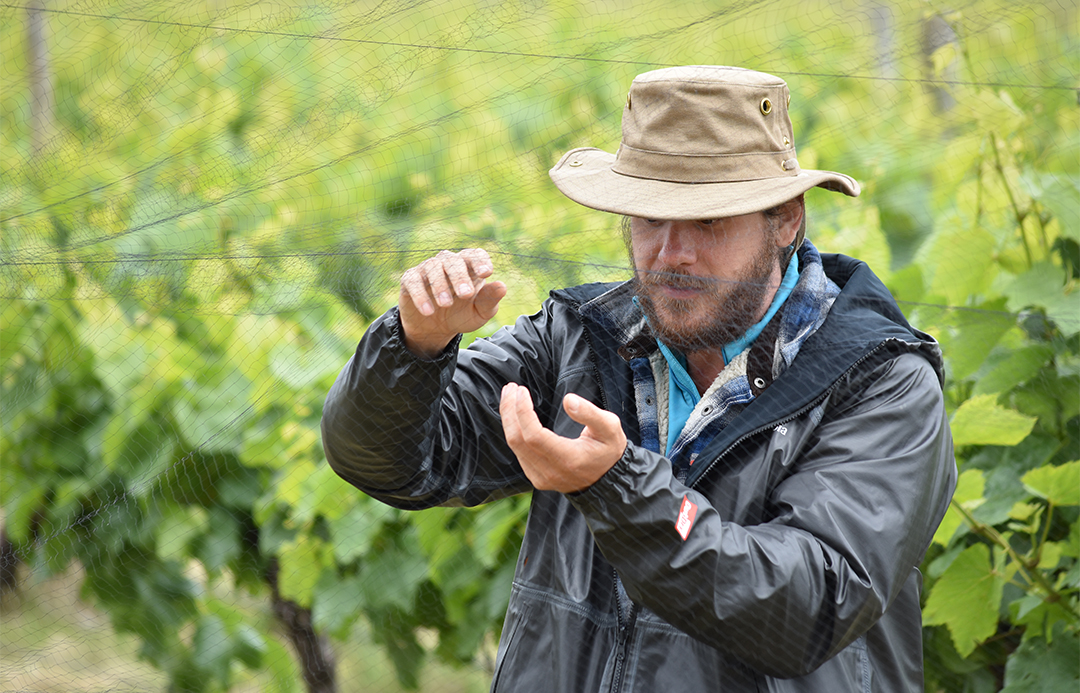
Image: Dr Czenze inspecting one of the mist nets that have been installed.
"Kate and Kat also set up mist nets, which are fine nets used to capture bats as they fly. Once captured, they collect the bat’s poop to determine their diet which insect pests are being consumed by bats. This can help to identify which pest species are most vulnerable to bat predation and how bat populations can be managed to maximize their pest control benefits.
"In the next year, we plan to expand our research to vineyards across New South Wales and other states to investigate how bat pest control differs between wine growing regions. This will help us to identify areas that are most vulnerable to pest infestations.
"Over the next five years, our goal is to extend our research to vineyards across the country. We'll be collaborating with growers to develop more effective and sustainable pest management practices.
"In the long run, we hope to establish a "biodiversity friendly" certification for winemakers to add to labels and showcase their commitment to sustainable farming practices. This will enable consumers to make informed choices and support environmentally responsible agriculture.
"We're looking grow the Bats and Wine group, and are keen to hear from students at all levels of study (undergraduate, honours, masters and PhD). If you're interested in joining the team, please contact Heidi or Zenon."
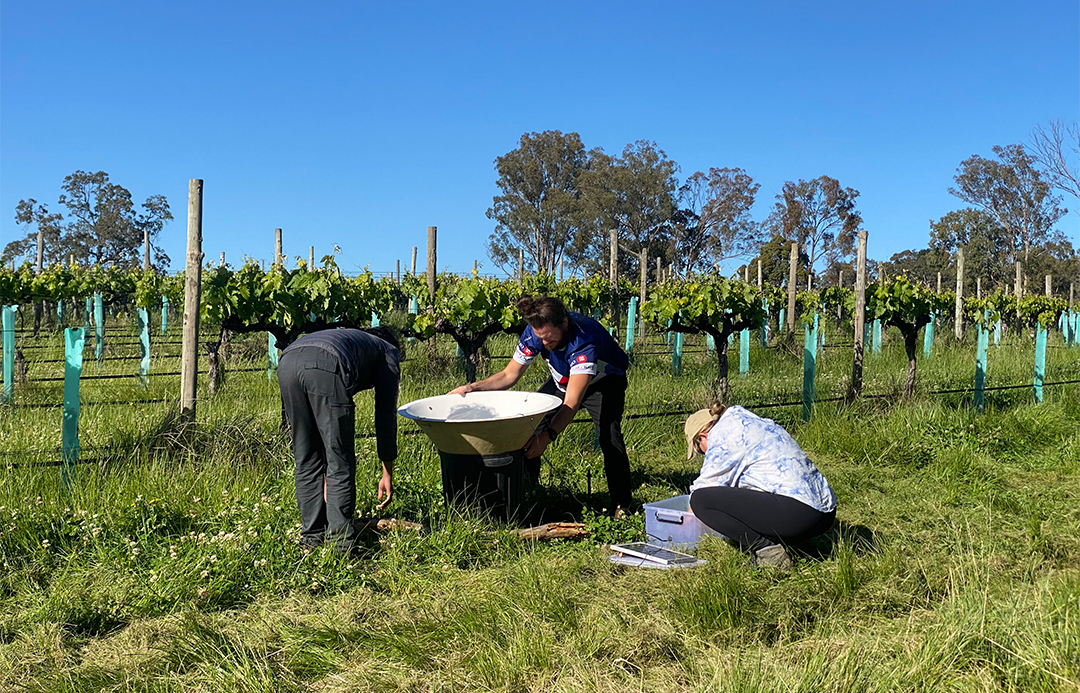
Image: UNE researchers conducting field work at one of the vineyard sites.
Dr Czenze recently received a Science and Innovation Award, sponsored by Wine Australia, that will fund the project for the first year. You can read more about the award here.

